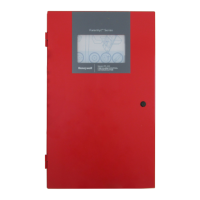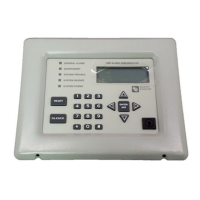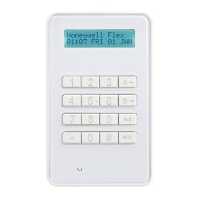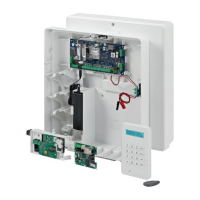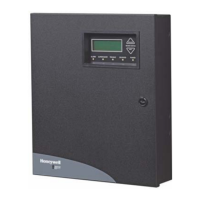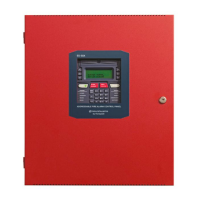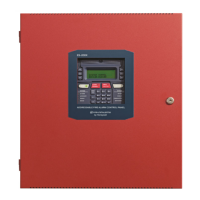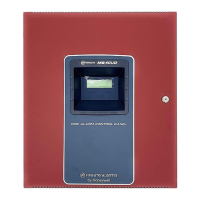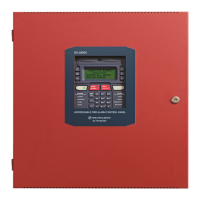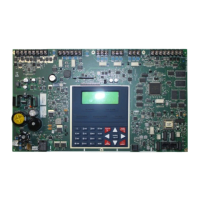IFP-75 Series Manual — P/N LS10147-001SK-E:E 4/6/2022 79
Zone Programming
3. Press 2 to enter the Zone Menu.
4. Press 1 to edit a zone.
5. Enter the Zone Number, then press ENTER.
Edit Zone Name
6. To edit the Zone Name, press 1.
You can enter a description to display a descriptive name for the a zone.
Edit Zone Properties
Zone properties consist of alarm delay characteristics and heat detector sensitivity.
1. Login to the panel.
2. Select 7 to access the Program Menu.
3. Press 2 to enter the Zone Menu.
4. Press 1 to edit a zone.
5. Enter the Zone Number, then press ENTER.
6. Press 2 to edit the properties of the selected zone.
Alarm Delay Characteristics
The programmed zone type is provided for user reference only. To modify the zone type, use the HFSS Honeywell Fire Software Suite.
Table 8.2 lists the delay choices and a description of each type. Then, press ENTER.
NOTE: See Appendix A for information to edit names.
Detection type also selected from this screen
(see Table 8.2).
Z001-Type:1-Count___
Heat [150]F.
Smoke Sense [LOW ]
Zone number being
programmed
Select the temperature that will cause heat
detectors in this zone to go into alarm.
Range: 135°-190° (IDP/SK devices)
135°-150° (SD devices)
Select the sensitivity:
LOW, MEDIUM, or HIGH
Figure 8.2 Edit Zone Properties
NOTE: You only see smoke sensitivity on the IFP-75 if the daytime/nighttime sensitivity is off under System Options. (See “Changing
Day/Night Sensitivity Time” on page 91). If Daytime/Nighttime sensitivity is on, this will bring up “Smoke Sens Day and Night”, two separate
settings with sensitivity selection being either low, med, or high for each.
Type of Delay Description
1-Count
1
One Count (No Delay). When this option is enabled, an alarm occurs immediately when a single device of any of the
following types goes into alarm: detector, manual pull, water flow, Aux1 or Aux2. This is considered the most typical
operation and is the default for all zones.
2-Count When this type of alarm delay is used, two or more detectors within the zone must go into alarm in order for the zone to
report an alarm. Switches of type manual pull, Detector switches, water flow, Aux1 and Aux2 are an exception; they will
cause an alarm when only one switch is in alarm.
When a single detector is in alarm in a 2-Count zone, the system enters a pre-alarm condition. In a pre-alarm condition,
the touchpad PZT beeps and the annunciator display indicates that a pre-alarm has occurred. If the zone has been
mapped to an output group for the pre-alarm event, the output group will activate. The pre-alarm will not be reported to
the central station.
When two count is used detector spacing shall be cut in half. You should not use the alarm verification feature, and no
delay shall be used.
Alarm Verification Alarm verification is an optional false alarm prevention feature that verifies an alarm condition by resetting the smoke
detector. If the alarm condition still exists by the time the reset cycle has completed, the detector will go into alarm. If the
detector is no longer in alarm, no report will access the central station. The alarm verification sequence is ignored if the
zone is already in alarm.
Table 8.2 Alarm Delay Types

